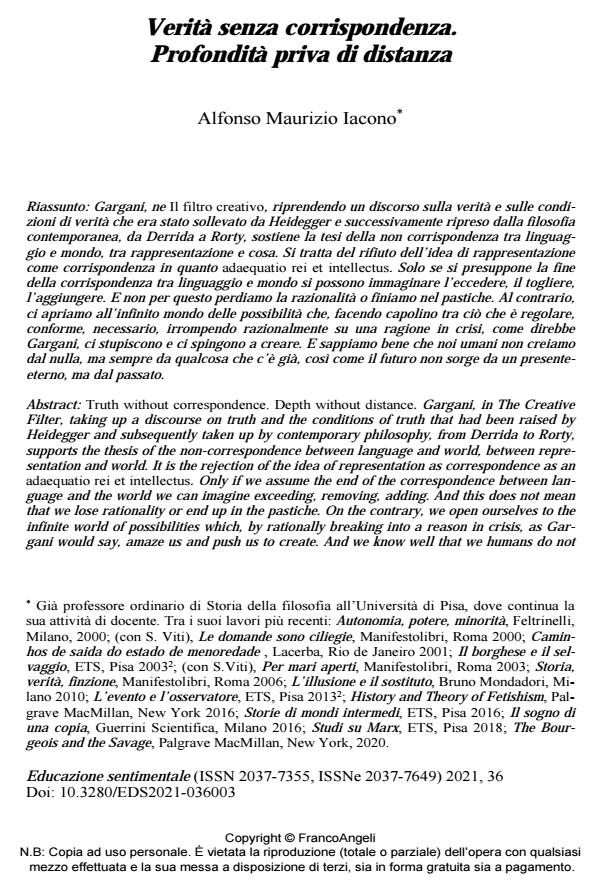Truth without correspondence. Depth without distance.
Journal title EDUCAZIONE SENTIMENTALE
Author/s Alfonso Maurizio Iacono
Publishing Year 2022 Issue 2021/36
Language Italian Pages 11 P. 11-21 File size 199 KB
DOI 10.3280/EDS2021-036003
DOI is like a bar code for intellectual property: to have more infomation
click here
Below, you can see the article first page
If you want to buy this article in PDF format, you can do it, following the instructions to buy download credits

FrancoAngeli is member of Publishers International Linking Association, Inc (PILA), a not-for-profit association which run the CrossRef service enabling links to and from online scholarly content.
Gargani, in The Creative Filter, tak-ing up a discourse on truth and the conditions of truth that had been raised by Heidegger and subsequently taken up by contemporary philosophy, from Derrida to Rorty, supports the the-sis of the non-correspondence between language and world, between representation and world. It is the rejection of the idea of representation as correspondence as an adaequatio rei et intellectus. Only if we assume the end of the correspondence between language and the world we can imagine exceeding, removing, adding. And this does not mean that we lose ra-tionality or end up in the pastiche. On the contrary, we open ourselves to the infinite world of possibilities which, by rationally breaking into a reason in crisis, as Gargani would say, amaze us and push us to create. And we know well that we humans do not create from nothing, but always from something that already exists, just as the future does not arise from an eternal present, but from the past.
Keywords: truth, non-correspondence, depth, distance, language, world
Alfonso Maurizio Iacono, Verità senza corrispondenza. Profondità priva di distanza in "EDUCAZIONE SENTIMENTALE" 36/2021, pp 11-21, DOI: 10.3280/EDS2021-036003